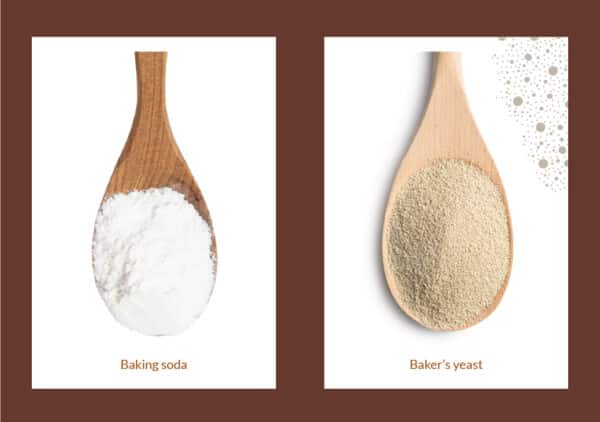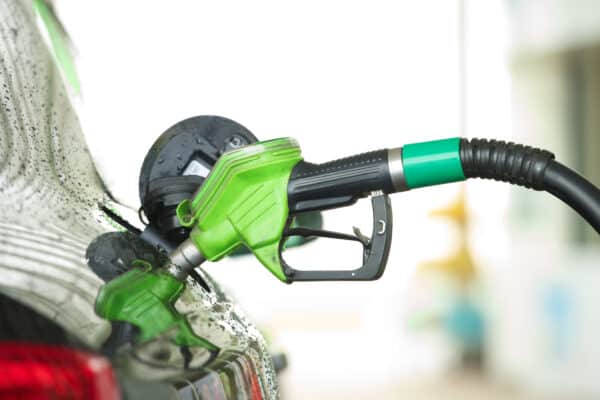Understanding yeast and winemaking
First, to understand how yeast can play such a significant role in wine flavor and aroma, we must recap the basics of wine production.
First, the grapes are harvested when they are ripe. Winemakers want to ensure that the grapes are not too sour, but also not overripe and too sweet. Therefore, there is a sorting process where overripe and rotten grapes, along with leaves and other parts of the plant are discarded. Then the grapes are removed from the stem and finally crushed to extract their juice. At this stage, you just have grape juice.
Second, comes alcoholic fermentation. You have probably noticed if you have ever been to a vineyard that many grapes have some whitish coloring on the outside, this is actually yeast. These wild yeasts can perform the fermentation process. However, in order to ensure a proper fermentation and avoid any off flavors, winemakers also add other yeasts to stabilize this process. By transforming the sugars from the grapes the yeasts produce ethanol and carbon dioxide. This process is what makes wine alcoholic.

Then the wine can undergo a second fermentation called malolactic fermentation, carried out by bacteria, which notably allows the acidity to be reduced. The wine can then be aged (in barrels for example) and finally bottled, where it can be drunk immediately or aged for years.
Find out more about the role of yeast and fermentation
Yeast and aromas
Yeast is one of the key parts of wine production that produces aromatic compounds that can influence the flavor of the wine. In addition to the alcohol production, the results of the fermentation process is also the production of very unique fermentative aromas. These aromas provide distinctive notes to wines such as their floral aromas, such as honeysuckle, and fruity notes like apple, banana, and peach.
Furthermore, there are some aromas commonly known in winemaking as varietal aromas, which are characteristic of a particular grape variety. These aromas according to research are already present in the grapes themselves, but not in an odorous form. Thanks to the action of yeast during fermentation, these much sought-after aromas are revealed and perceptible. The most common of these varietal flavors is the uniquely acidic grapefruit aroma of a Sauvignon Blanc.
Researchers now believe that different yeasts used in winemaking are either directly responsible or serve as an unlocking mechanism for nearly eighty percent of all the aromatic compounds that we can smell in wine(1). So without yeast, your wine would be about as complex as your child’s glass of grape juice.
More remarkable is that when the yeast becomes inactive in the wine or dies, the yeast can still have profound effects. When inactivated yeast is included after the fermentation process, it can release antioxidants that soften the tannins which can help winemakers make a more balanced wine. Furthermore, added after fermentation, yeast can help the wine to have a longer shelf life.
The diverse world of winemaking yeast
The most commonly used yeast species in winemaking is Saccharomyces cerevisiae, which is the primary yeast responsible for alcoholic fermentation. Nowadays, hundreds of different strains of Saccharomyces cerevisiae are available in oenology. Each of these strains has its own specificities in terms of fermentation performance or aroma production.
Saccharomyces cerevisiae is the same yeast species that is used for baking bread, brewing beer, and making spirits. But depending on their process of origin, these strains will also have their own specificities.
While Saccharomyces cerevisiae is the most common yeast used, there are hundreds of other species. So, how do winemakers select which yeast to use?
Before they can select their preferred yeast, yeast producers have to discover them. This is why yeast producers visit vineyards and wine cellars all over the world, searching for unique yeasts that can unlock the hidden potential of different grapes.
They then study these yeasts and select those that will have both interesting fermentation capabilities and aroma production that will be of interest to the winemaker Then the yeast producers will grow the desired yeast to the quantity needed by the winemakers. Inside a single packet of yeast live millions of individual organisms, ready to help winemakers make exquisite wines!
In France alone, there have been three hundred different strains of yeast discovered which can be used in winemaking!
Did you know that French wines have American roots?
Have you ever heard of the Great French Wine Blight?
In the mid-19th century, nearly half of the French grape vines and vineyards in France were wiped out by an aphid that originated in North America and was carried across the Atlantic by French botanists in the 1850s. This aphid and the disease it carries have become known as grape phylloxera.
It was later found that if European vines were grafted to resistant American rootstock they would be resistant to the phylloxera. While many French wine growers did not like this idea, they had no other option.
To this day, there is still no remedy for phylloxera, and it still is very dangerous for any vineyards not planted with grafted rootstock.
Now you know everything there is to know about yeast and winemaking and hopefully next time you open a bottle of wine and smell whatever pleasant aromas you smell you will think of yeast and know that if it was not for the yeast your wine would not smell or taste nearly as good! If it was not for the yeast, it would just be grape juice!
Learn more about yeast and other fermented drinks




